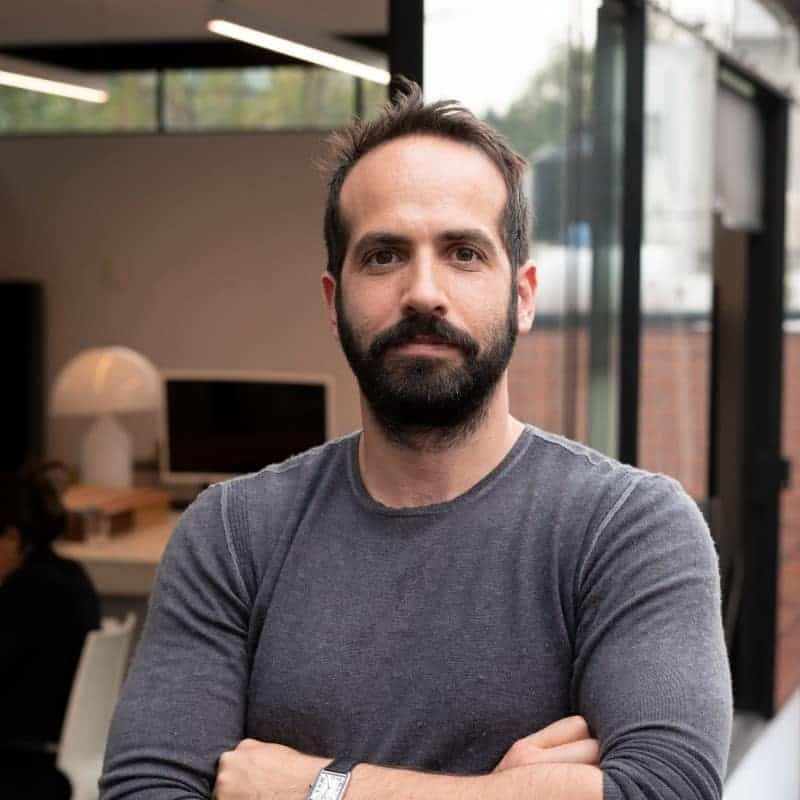Founded by two former Afiniti employees, this AI company recently broke into the Mexican tech scene by announcing a pre-seed round of US$2 million led by ALLVP. Its concept arose from watching companies struggle with predictive models to retain customers. Senzai – predominantly serving banks, insurers, and telcos – takes a different approach. They precisely identify which customer interaction will yield a certain result in areas such as retention, sales, or collections.
Senzai charges companies only as much as it generates quantifiable value for them – a testament to their confidence in their model.
Julián López-Portillo, co-founder and CEO, answered the Contxto questionnaire.
What problem does Senzai solve?
We’ve made optimizing sales, retention, and collections campaigns automated and easy. Our team has worked with everything from Fortune 500 companies to SMEs, and the problems they face are exactly the same, and so are the solutions. Companies have a relatively limited set of factors they can control in order to influence customer outcomes at any point in time: what channel they use to interact, the timing of the interaction, the content of that interaction, what’s being offered, and sometimes the quality of service they provide. So the goal is to find how you can play around with these “levers” to reach the desired outcome.
The problem is that finding the right combinations is difficult—most companies go down the road of attempting to predict the outcomes and then formulating strategies around those predictions (e.g., targeting the customers who are most likely to cancel with discounts). This is incredibly difficult because the predictive models don’t tell you anything about how to change the outcomes they are predicting!
At Senzai we take a different approach. We focus directly on finding out how these factors affect customer outcomes. In other words, we focus on identifying what changes the outcomes, not how to predict them. This simplifies the process of creating a campaign because the model outputs tell you what will have the biggest impact on the desired outcome, so you know which customers need a discount and which ones just need a gentle nudge.

How is it different from others who have tried this idea before?
No one looks at the problem in the same way we do, especially outside of the digital space. As mentioned above, our focus is on finding ways to influence outcomes, not predict them. The best way to envisage the difference is imagining a customer, Alida. A predictive model will look at the data on Alida, and try to predict the probability that she will, for example, cancel her contract. At Senzai, we instead look at the data and say: if we offer Alida a discount of 5% how much does that reduce the likelihood that Alida will cancel. This may seem like a subtle difference, but it really helps when you are trying to create a campaign.
This approach means that the core of our solution is different from most AI tools—it’s an experimentation platform. We run experiments on historical data to identify instances where we can estimate these impacts, and where there is no data available, we run experiments to generate the data. There’s a lot of complexity in how to do this efficiently since running experiments can be very expensive, but at its core the concept is simple: We’re constantly searching for what gets you the biggest bang for your buck!
What achievement of your company are you most proud of?
It’s still early days, but so far I’m proud to be able to be building a truly innovative AI company in Mexico, funded by a Mexican VC (ALLVP), and with global ambitions. It’s a testament to all the efforts of the start-up and VC community before me that have managed to create an eco-system that promotes local innovation and is willing to take the risk on projects like this. I hope that Senzai can live up to these efforts and be at the forefront of a budding and world-class Mexican AI sector.
Tell us a Latin American startup that you admire.
It’s a toss-up between Rappi and Mercado Libre. Both took a well-established use case but were truly excellent at executing—tropicalizing the concepts and quickly expanding into adjacencies that made sense in their target markets. It’s inspiring to see LatAm tech companies truly compete on the world stage and even outshine their competitors.
What is the next step for the company?
It’s all about adding value. The pandora’s box of AI has just been opened with the advent of ChatGPT 3, and what was already an inextricable maze of buzzwords has become impossible to keep up with, all the while people forget to take a step back and figure out how to measure the actual value that’s being created. Our goal is to show companies how this can be done and how they can use all this innovation to systematically and continuously improve their performance. If you’ll excuse the pun, our next step is to make sense of AI.
Main image: Adobe Stock
También te puede interea: Five Questions With: Geopagos







